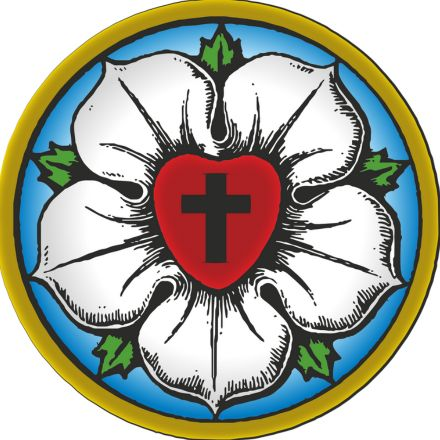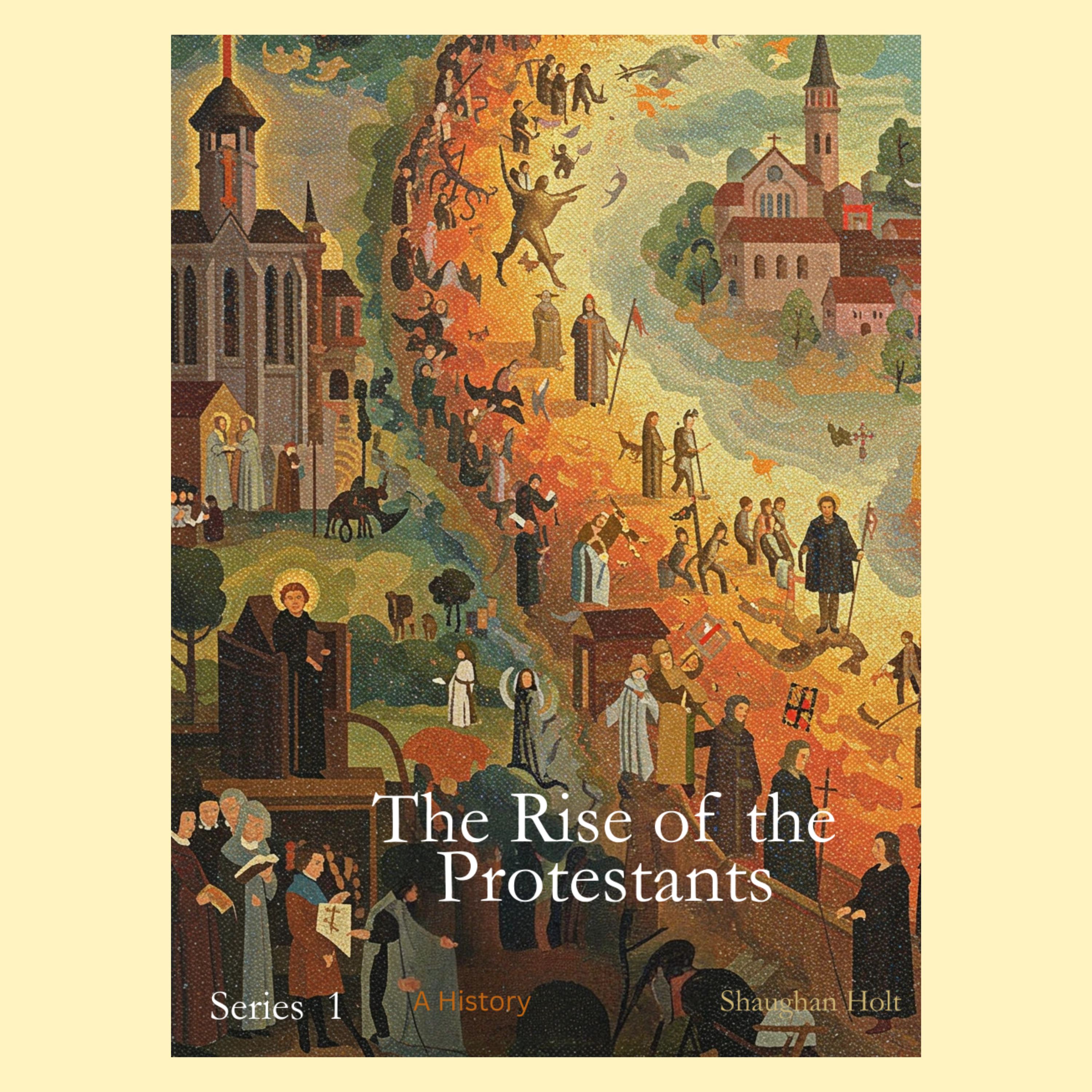Episode 2
Three English Bibles. - Shorter listen.
Audio • Season 1 • Episode 2 • Three English Bibles. - Shorter listen.
The Artwork is: The cover page of the Coverdale Bible, which was first printed in 1535.
The Music is: Ein feste Burg ist unser Gott, 'A Mighty Fortress Is Our God'; Composer: Martin Luther.
This is a shorter version of the original episode, - for a quicker read !
In this episode, we discuss the life and death of Thomas More, author, statesman, and noted Renaissance humanist. We then focus on Myles Coverdale, an important English Bible translator and reformer.
Working alone, Coverdale carried out his mission independently, successfully creating the first fully printed English Bible, commonly known as The Coverdale Bible.
Our story then leads us to Thomas Cranmer, who was born in Nottinghamshire to a family with connections to the local gentry.
Printed in Antwerp in 1537, the Matthew Bible was an early compilation of English translations of the Bible's books.
The Great Bible of 1539 was the first edition of the Bible in English, authorised by King Henry VIII of England to be read aloud in the church services of England.
Three key English Bibles - the Great Bible published in 1539, the Bishops' Bible in 1568, and the King James Bible in 1611 - were all significantly influenced by Tyndale's biblical translations.
His work profoundly influenced later English translations and played a crucial role in the development and widespread use of the English language.
Transcript
"All rights reserved. No part of this podcast may be reproduced, translated, distributed, or transmitted in any form or by any means, including photocopying, recording, or other electronic or mechanical methods, without the prior written permission of the copyright holder, except in the case of brief quotations embodied in critical reviews and certain other non-commercial uses permitted by copyright law".
This is a shorter version of the original episode, - for a quicker read !
Series 1.
Episode 2.
Three English Bibles. - shorter listen.
William Tyndale, is widely recognised as a groundbreaking English biblical scholar, whose translations played a crucial role in making the Bible accessible to English-speaking audiences.
versions: the Great Bible of:His innovative translations, not only rendered the text in everyday English, but also became integral to English religious and literary traditions.
ree from Oxford University in:Emerging from the Lollard tradition, a pre-Reformation movement, Tyndale, was inspired by scholars such as John Colet and Erasmus, to become a priest.
Realising, that his beliefs were not aligned with the English Church, he began to publicly criticise the practice of praying to saints, and the belief that only authorised clergy, could interpret Scripture.
As a result, he made the breathtaking decision, to produce an English translation of the Bible.
Between the years:His insights emphasised Grace, Faith, and Redemption, laying the groundwork for the Protestant Reformation.
Through these teachings, Luther significantly influenced the development of modern Christian thought, advocating for a return to scriptural foundations.
Notably, his interpretation of Romans, shaped the concept of Justification by Faith Alone, which became a cornerstone of Protestant theology.
During this period, he reinterpreted the terminology used by the Catholic Church, such as "penance" and "righteousness," concluding that the Church had lost sight of Christianity's central truths.
In Christian theology, Righteousness, means being right in the eyes of God, while Justification, is the act by which God moves a willing person, from a state of sin to a state of grace.
In: Three years later, in:In this seminal essay, Tyndale outlined six essential themes: The Church, Scripture, Faith, the Papacy, the Fathers, and Sacred Signs.
A remarkable combat now ensued, between Tyndale, who championed Scripture's authority, and More, who defended the authority of the Church, acknowledging, that Tyndale's language, could result in a more decentralised and less sacred church.
February:He was a lawyer, judge, author, statesman, and a prominent figure of the Renaissance humanist movement.
More, consistently opposed the Protestant Reformation, questioning the theologies of Martin Luther, Zwingli, John Calvin, and William Tyndale.
May:He opposed the king's separation from the Roman Catholic Church, and refused to recognise Henry, as the Church of England's authority, or accept his annulment from Catherine of Aragon.
As a result, More was imprisoned in the Tower of London, for refusing to take an oath, supporting the Act of Supremacy.
Thomas Cromwell visited More several times, urging him to take the oath, but More remained steadfast in his refusal.
statesman and lawyer, born in: ister to King Henry VIII from:Despite Cromwell’s heartfelt appeals, Thomas More was found guilty of treason.
The court, sentenced him to the gruesome punishment of being hanged, drawn, and quartered.
However, in an act of clemency, the King commuted his sentence to beheading.
July:According to reports, his final words expressed, that, he died as a loyal servant of the King, but placed God above all else.
Following traitor tradition, his head was displayed on London Bridge for a month.
His last wish for a family burial was denied, and he was buried in an unidentified grave at St. Peter ad Vincula church, in the Tower of London.
his famous book, published in: It wasn't until:"Utopia" sparked a new literary genre, inspiring both Utopian and Dystopian fiction, that explores ideal communities, and their flawed alternatives.
In: version of the Pentateuch in:The Pentateuch, known as the Torah in Greek, features well-known stories, such as those of Adam and Eve, Jacob, Moses, and the Ten Commandments.
Rome, had set the Hierarchy above Faith; the Reformation, was now set to restore Faith, to its place, above the Hierarchy.
Thomas Cranmer was born in:He became a significant historical figure, as the first Protestant Archbishop of Canterbury.
He attended Jesus College Cambridge at the age of fourteen, where he studied philosophy and literature, influenced by humanist scholars such as Erasmus.
By: In: In January:During this period, his travels took him through Nuremberg, a stronghold of Lutheranism, where, as a catholic cleric, he was able to observe the transformative effects of the Reformation.
In October, he learned that he had been selected to succeed Archbishop William Warham, as Archbishop of Canterbury, a position secured for him, by Anne Boleyn's influential family as Henry pursued her.
Myles Coverdale, born in: elor's degree in Canon Law in: Ordained as a priest in:Coverdale left the Augustinian order, and began preaching in open-air settings, against key doctrines like transubstantiation, the veneration of images, and traditional confession practices.
mpted him to leave England in:He found safety in Antwerp, where he worked alongside William Tyndale on the translation of the English Bible.
From:Although not yet proficient in Hebrew or Greek, he relied on Latin, English and German sources as well as Tyndale's work, to support his research.
May:He was held in prison at Vilvoorde Castle for the remainder of the year.
At the time of his arrest, William Tyndale had translated the Old Testament, only up to, the Book of Chronicles.
October:His version, included 67 beautiful woodcut illustrations, to help readers understand the text better.
In: In early October:After Tyndale was executed, Coverdale took the initiative, to create the first complete printed English Bible, known as the Coverdale Bible.
In:Influenced by Thomas Cromwell, Henry was already contemplating an official translation, and the Convocation's petition acted as a catalyst for this decision.
The following year, in:This translation was primarily based on William Tyndale's work on the New Testament.
For the Old Testament, Coverdale drew from German translations made by Martin Luther and others.
In the year following Tyndale's death, yet another version of the Bible was published in England.
This edition was called the Matthew Bible, named after its attributed translator, Thomas Matthew.
ing and printed in Antwerp in:The Matthew Bible was significant because it was one of the first English translations of the Bible put together by an Englishman, John Rogers.
To protect his identity, and hide William Tyndale's contributions to the work, Rogers chose to use the pseudonym, "Thomas Matthew".
In September:To meet this demand, the Great Bible was commissioned for production.
ll English service books from:Cromwell, soon dispatched Miles Coverdale to Paris, to supervise the production of this new Bible.
The Great Bible of:While it incorporated much of the content from the Tyndale Bible, it removed some of its more objectionable features.
This Bible was dedicated to Henry VIII, who granted it permission for public reading.
The Great Bible, is named for its large size, but is also known by several other names, such as:
The King's Bible, because King Henry VIII of England authorised its use,
The Cromwell Bible, as Thomas Cromwell directed its publication,
The Whitchurch Bible, named after its first English printer, and, the Chained Bible, designed to prevent its theft from the church.
the Great Bible began in May:However, a group of English bishops, along with French theologians from the Sorbonne, sought to put a stop to it, due to its use of the English vernacular.
As a result, the Pope came under pressure, and issued a decree, that halted the operations of the press, and called for the burning of all copies of English vernacular Bibles.
Coverdale was able to save the typeface and some completed sheets, from being confiscated, by relocating them to London, where Grafton and Whitchurch, were able to complete the work.
In an innovative approach, Coverdale arranged the Latin Vulgate text, next to his English translation, in parallel columns on each page, making it easier for readers to compare the two versions directly.
As the decade came to a close, conservative religious leaders, led by Bishop Stephen Gardiner, began to regain their power and influence over the decisions previously made by Thomas Cromwell.
Thomas Cromwell's downfall began, with his arrangement of King Henry VIII marriage, to Anne of Cleves, which ended disastrously, after only six months.
June:To avoid a public trial, his enemies convinced the King, to pass a bill of attainder, which allowed Parliament alone, to sentence him to death.
While imprisoned, Cromwell wrote several heartfelt letters to the King seeking mercy, but his requests were ignored.
July:On the same day, in an extraordinary turn of events, just nineteen days after the annulment of his marriage to Anne Boleyn, King Henry VIII, aged forty-nine, married his fifth wife, Catherine Howard, who was between fifteen and twenty-one years old.
Standing on the scaffold before his execution, Thomas Cromwell, the Earl of Essex, made the following remarks:
"I have come here to die, not to defend myself”.
“By your law, I have been condemned to die, and I thank my Lord God for appointing me to this fate”.
“I have offended my prince, for which I seek his forgiveness, and I ask you all to pray to God for me".
Likely fortified by alcohol, it is believed that the inexperienced executioner, took two or three strokes to behead him.
Henry VIII, soon regretted executing Cromwell, blaming his Privy Council, for escalating minor errors into serious, false accusations.
Cromwell had been instrumental in reforming England's religious, political, and social landscape.
Henry quickly realising, how difficult it would be, to find a suitable replacement.
It's important to note that out of the three Bible translators, two faced martyrdom.
October: February:In contrast, Myles Coverdale escaped execution, likely due to his involvement in later Bible versions.
the Great Bible published in:Some of Tyndale’s Quotes:
The only way to save your soul, which was the only meaning of being on earth, was to listen to the word of God.
To find God's word, you must understand it in your own language.
The Bible, contains the word of God, not rules made by successive Popes over centuries, and turned into a system, which I object to, in almost every particular.
If God spares my life, before long I shall cause a ploughboy, to know scriptures better than you.
Although the Plough boy is illiterate, through education, the Bible could be read aloud directly and understood by everyone.
The Commoners of England, must be able to read it for themselves, in plain English.

